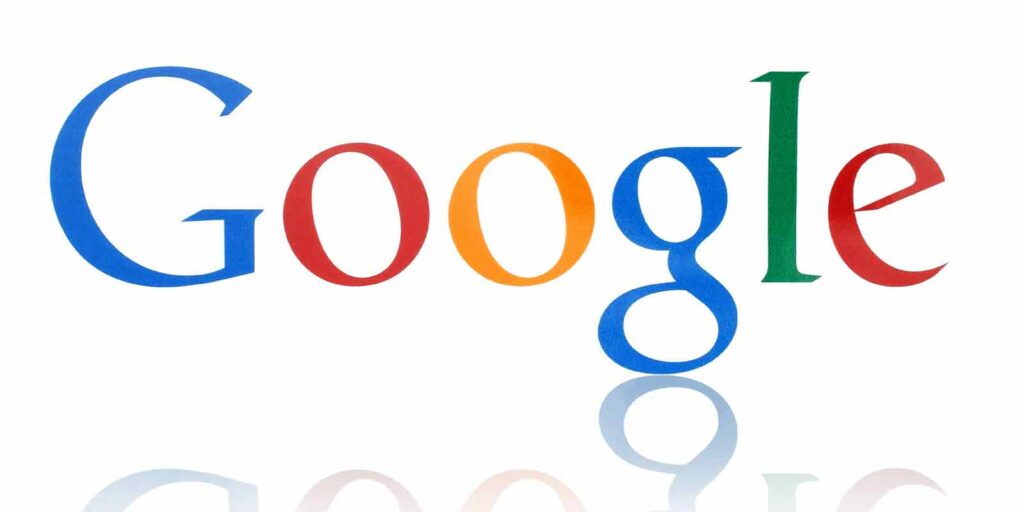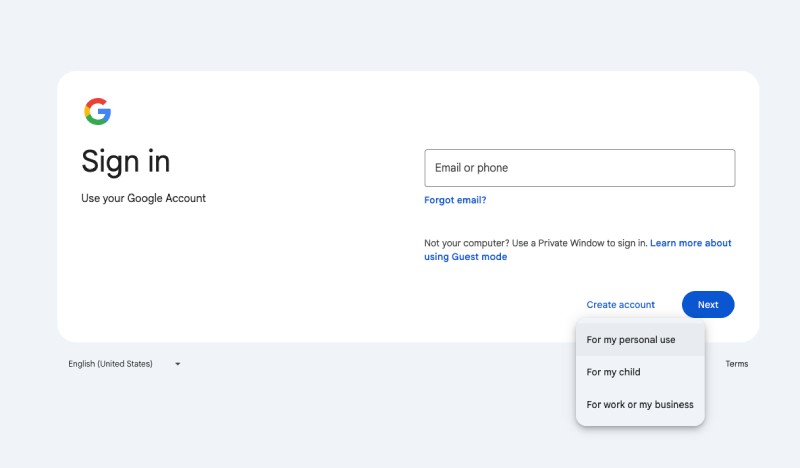Google releases one or more changes to improve its search engines on a daily basis. Many of these minor updates are not noticeable but several times a year, the world’s most popular search engine makes broader changes that have a significant impact on their search algorithms.
 These “core updates” aim to deliver the most relevant and authoritative content to searchers. In early June, Google announced its first core algorithm update for 2021. They named it the June 2021 Core Update which was followed by the July 2021 Core Update which completes the two-part core update. These updates have had some widely noticeable effects with many websites experiencing drops or gains.
These “core updates” aim to deliver the most relevant and authoritative content to searchers. In early June, Google announced its first core algorithm update for 2021. They named it the June 2021 Core Update which was followed by the July 2021 Core Update which completes the two-part core update. These updates have had some widely noticeable effects with many websites experiencing drops or gains.
The June 2021 Core Update should not be confused with the Page Experience Update which is a separate algorithm update that focuses on Accelerated Mobile Pages (AMPs) and Core Web Vitals and also launched in June. This Page Experience Update is slowly rolling out and is expected to reach completion by the end of August 2021.
Purpose Of Google’s Core Updates
Google’s search algorithm relies on hundreds of known ranking factors and countless unclarified ranking factors. It makes sense that periodic updates are necessary to ensure that searchers are receiving results that are highly accurate and relevant to their queries. Google’s core updates are designed to serve several important functions:
- Google is continually aiming to improve how websites are ranked based on factors like relevance and content quality.
- Google is trying to eliminate clickbait and while websites may not face penalties due to a core update, clickbait can affect a site’s ranking as the algorithm chooses other content to rank higher in the search engine results pages (SERPs).
- Google is giving more priority to high-quality, cite-worthy websites that are both interesting and engaging to a focused audience.
- Google is placing higher importance on expertise and sourcing. The search engine routinely ranks authoritative websites higher than sites that are written by unauthoritative authors.
- Google has reported the importance of creating content that is well-written, well-displayed and free from excessive distractions like advertisements. Content should also be available on all platforms.
- Google wants webmasters to create content that serves the genuine interests of site visitors instead of simply displaying information that they believe search engines want to see.
How The Update Impacted SERPs
On June 2nd, Google announced the June core algorithm update and by the 4th of the month, update-related changes began to appear on the SERPs. The first part of the two-part core update rolled out over a period of ten days, a slightly shorter timeframe from the typical two-week span that is usually seen with this type of update.
 Figure 2.1
Figure 2.1
To measure the impact of the Google core update, data providers typically analyze volatility in the SERP rankings. The average volatility change during the core update is compared to the volatility changes that occurred prior for websites in a wide range of industries.
June 4th was considered the peak of the update effect and the volatility across all sectors had a score of 9.3 on mobile and 9.2 on desktop. These scores are comparable to those seen in the last core updates in May and December of 2020. Since the June 4th peak, SERP volatility has maintained fairly calm levels.
Figure 2.1 shows the total number of unique website visitors in a month (38,951) for one of 321 Web Marketing’s clients, Raleigh Gynecology & Wellness. We can see the amount of customers coming to their website through their mobile devices.
Industries Affected By The Update
 Figure 3.1
Figure 3.1
With just a 0.2 margin, mobile SERPs appeared to be just slightly more volatile than desktop SERPs. The first two days after the update, the SERPs appeared calm with an average volatility of 4.5, which is in the green zone level. However, by June 4th nearly all sectors moved to the red zone which signals that Google’s core update affected businesses in almost every industry. However, some industries were more affected than others.
Figure 3.1 proves that potential customers are viewing websites through their mobile devices and therefore, it is important to monitor your mobile website. This is the data over one month for one of 321’s clients, Waterproof Caulking & Restoration.
Just a few days into the update, the most affected sectors on both desktop and mobile SERPs were health, vehicles/auto, animals/pets, travel and science. Industries like beauty/fitness, people/society and real estate experienced similar volatility levels on the mobile web.
Approximately half of the websites that were impacted by the June 2021 core algorithm update were small- and medium-sized companies that have a monthly traffic of 500K or less. Industries that saw the biggest gains included businesses in law/government, food/drink and internet/telecom. Also topping this list included sectors like shopping, sports, arts/entertainment, jobs/education, news and finance.
Of course, some industries experienced a drop in their average position. Websites that experienced the largest position drops just days into the core update include businesses in the business/industrial, jobs/education and food/drink sectors. That means that certain businesses in the same sectors were affected very differently by the update.
Sites lost an average of 16 positions during the June core update, a loss that was slightly better than the average of 23 positions lost during the December 2020 update. Travel websites were among the most impacted during the update with Fresno Yosemite International Airport experiencing a drop of 50 positions and the Will Rogers World Airport in Oklahoma experiencing a 36-position drop. Other websites hit hard include Quora.com, Anthem.com, Livescore.cz, Niche.com and Lagrange.edu.
Page Experience Update & Core Web Vitals
Google’s long-awaited Page Experience Update began to roll in mid-June 2021 and is expected to affect all users across the globe. However, it is not likely to play its full role until the end of August. Due to the gradual rollout process, websites should not experience any dramatic spikes or drops.
The Page Experience takes several signals into consideration when providing searchers with the ultimate web browsing experience. First, Google assesses all signals and provides websites with a ‘page experience’ score that they can view in the Search Console.
The signals analyzed by Google to give websites a page experience score include:
Core Web Vitals
Google Core Web Vitals are used to track a range of real-world user interactions with the website to determine an average page speed and performance score. Core Web Vitals affect a site’s page rankings in the SERPs.
Security Issues
If a website has security issues that have not been addressed, all pages on the site are disqualified from a “Good” status.
Mobile Usability
Websites must not have any mobile usability errors to gain a good page experience score.
HTTPS Usage
To be eligible for “Good” status from Google’s Page Experience, it must be served over HTTPS.
Ad Experience
Websites cannot use advertising techniques that are considered interrupting, distracting or not conducive to achieving a good user experience.
The June 2021 Page Experience Update also eliminated AMP as a requirement for pages to be included in a Top Stories carousel. The search engine has also expanded the use of non-AMP content to Google News and has removed AMP badge icons from search results.
The Page Experience update puts a direct focus on specific site-level UX signals known as the Core Web Vitals. It is important for website owners to look closely at their sites to identify where improvements should be made after this update.
Google’s Core Web Vitals are part of the search engine’s “page interface” redesign that includes a collection of new user experience-based ranking signals that went live in June 2021. Introduced in May 2020, core web vitals refer to a set of metrics that relate to speed, visual stability and responsiveness.
Core Web Vitals are defined as the following by Google:
Largest Contentful Paint
This is the time it takes for a web page’s main content to load. Ideally, an LCP measurement should be 2.5 seconds or less.
First Input Delay
This is the amount of time it takes for a web page to become interactive. Ideally, the first input delay should have a measurement of 100 ms or less.
Cumulative Layout Shift
This is the amount of unexpected layout shift of the visual page content. Ideally, the cumulative layout shift should have a measurement of 0.1 or less.
This set of measurements aims to help website owners more accurately measure their website’s user experience in terms of visual stability, loading and interactivity. Although website owners have a basic understanding of what to expect from Core Web Vitals, they are subject to change based on what users expect from their online experience.
When measuring Core Web Vitals, website owners can use a variety of innovative tools, such as Search Console, Lighthouse, PageSpeed Insights, Chrome UX Report, Chrome DevTools and others.
Managing The Page Experience Update
When Google announces new major updates, they quickly gain attention and the Page Experience update is no different. Search engines already use certain aspects of user experience to assist in ranking websites but with the implementation of the Page Experience update, new ranking factors have been introduced, including the three metrics known as Core Web Vitals that are based on data aggregated by the Chrome User Experience Report.
These metrics play a direct role in how a website owner manages their site. First, loading experience should be analyzed. LCP measures the time it takes for relevant content to load on a web page. There are several things that can cause a website to have an LCP that is longer than desired, such as too many large images, insufficient web hosting services, too many third-party scripts and the way in which images load.
There are several things that website owners can do to improve their LCP, such as removing unnecessary components, compressing elements that can be compressed and finding web hosting that offers a highly responsive server. Also, consider how inactivity affects page experience. FID measures the length of time it takes for a page to respond to a user’s input. The biggest culprit of a high FID is heavy JavaScript. This can be resolved by reducing a web page’s reliance on JavaScript.
The final new factor that is included in the June 2021 update is visual stability which is measured with cumulative layout shift. CLS helps measure how stable a website is as each page is loading. Look to see if certain elements or images move around as the page loads. This presence of moving elements can signify that the site has a high CLS. A high CLS can have a number of causes, such as a slow computer or internet connection on the user’s end, or if ads or images do not have specific dimensions.
Some key strategies to consider to get ahead of the Page Experience update include:
- Continue to optimize SEO strategies as this can help bring directed traffic to the website which can help increase the ranking on Google.
- Engage in social media marketing and practice healthy customer interaction to bring in a larger audience with whom the business can share information and engage.
- Use both organic and paid ads to help increase the business’s online visibility and generate higher traffic and leads.
- Provide users with new platforms in which to interact with the business, such as through podcasts or entertainment platforms like YouTube.
- Implement magnet programs to collect consumer details for use in email marketing campaigns.
How To Address A Hit In Ranking
 Websites that have already experienced a hit in their rankings may be wondering how to proceed. Sites that have had a sudden drop in their ranking position should discontinue making any major changes for the time being. Many websites that experienced a drop in the June update found that their ranking reversed in the July update.
Websites that have already experienced a hit in their rankings may be wondering how to proceed. Sites that have had a sudden drop in their ranking position should discontinue making any major changes for the time being. Many websites that experienced a drop in the June update found that their ranking reversed in the July update.
Google also recommends that websites that have seen a drop in rankings take the time to improve the relevancy and accuracy of their website. These websites should focus on content authoritativeness, visual style, content presentation, author expertise and quality in comparison to similar pages.
While some businesses have had success with the ‘wait and see’ approach, this does not always lead to a successful outcome. It is important for website owners that have had a drop in rankings to measure how their web content compares to other pages that outrank their own pages and how to improve these pages to best their competitors.
There are also other ways that website owners can address the June 2021 core update, such as re-evaluating their SEO content. High-quality content remains king and without it, websites can experience a major hit in the SERPs. Google continues to seek out pages that offer the best information overall, even if the website has a subpar page experience score.
Web owners should also take the time to inspect their site for possible UX issues. UX remains a vital issue for the Page Experience Update and how it is associated with Core Web Vitals.
Reassessing content to improve its quality is an important part of building a website that complies with Google’s June 2021 core algorithm changes. Start by checking all headlines and introductions. Headlines should be strategically phased to provide readers with a clear summary of what the content is about. Avoid clickbait and keyword-laden headlines which are frowned upon by search engines.
Also, evaluate the body of the content. The website’s content should be original and provide value to the reader. The information must be accurate and not readily available from other sources. Ideally, it should be backed by authoritative sources and be well-researched. Any sources quoted should be properly cited or backlinked.
Consider user experience when building a site. Content should be easy to read and contain language that accommodates the target audience’s expected reading and knowledge level. The length of the content should be long enough to thoroughly convey the information but not too long to avoid overwhelming the reader. Overall, there are no rules regarding the ideal word count.
 Figure 6.1
Figure 6.1
Figure 6.1 is an example of an error found on a site after performing a
SEO audit. Once this error is found, it can be fixed and will not affect the website’s SEO ranking in a negative way.
Finally, assess the quality of the content, including the content itself and how it is presented to the target audience. The content should be well-written, engaging, and free of grammatical and spelling errors. It should also have a distinct brand that helps differentiate the business from its competitors.
Perform a basic SEO audit on the website to determine where it stands. The website should be mobile-friendly, meaning it can be efficiently displayed on a wide range of devices, such as computers, smartphones and tablets. It should also be usable, meaning not too distracting with tons of pop ups or ads. The website should be easy to navigate and search for relevant content. It should also include on-page SEO, such as H1 tags, an optimized URL and image ALT texts. Ensure that there are no broken links.
Here is a step-by-step of how to handle a website that has been impacted by the July 2021 core algorithm update:
1. Verify That Site Rankings Have Dropped
There are a variety of SERP tools that web owners can use to verify that their website rankings have indeed dropped. Once this has been confirmed, take the time to analyze the website’s old ranking and see how it compares with the new ranking. Also, take note of how the URL was ranking and the type of content that saw the most success in the rankings before the update.
2. Analyze Changes To The Website
Website owners who made the decision to make big changes to their site just before the June 2021 core algorithm date may see major fluctuations in their rankings. This is a fairly normal occurrence and should level itself out in time. However, it is important to keep an eye on the SERP ratings on a daily basis to see if the rankings are dwindling further down, remaining steady or improving over time.
3. Make Essential Adjustments To Content
Content is the foundation of any great website. Ensure that the content on the site displays authoritativeness and is relevant to the searcher’s intent. This core algorithm update did not affect any links so only changes based on search relevance should be addressed. In addition, business owners may check for changes in the titles, meta tags and descriptions.
4. Review Backlinks And Technical Errors
 Figure 6.2
Figure 6.2
If Google comes across problems when crawling and indexing a website, it is likely to experience a drop during the search engine’s core algorithm updates. If this concern is valid, identify where the problem has occurred and resolve it as soon as possible. While making these changes, also make sure that no valuable backlinks were lost. It is also wise to build more authoritative backlinks.
Figure 6.2 demonstrates the number of backlinks gained for one of 321’s clients, OFP Law, as of August 31, 2021.
5. Determine Search Intent
What people are searching for can directly impact how a website ranks in the SERPs. It is important for website owners to know what their target audience is searching for and to create content that aligns with these needs. Implementing the right SEO strategies can help searchers find the information they want from a reliable source.
6. Check The Status Of Competitors
It is common for businesses to continuously check with their competitors to see how they are performing. The same concept applies following major core algorithm updates. Check to see whether the competitors’ rankings are going up, down or remaining steady. How well or poorly a competitor is ranking can play a role in how well another business in the same industry is ranking.
A Look At The July 2021 Core Algorithm Update
The second part of the June core algorithm update began in July. The second update of 2021 has been fully rolled out and the search results should now have settled from what they previously encountered directly after the implementation. Google announced that the July core algorithm update would introduce changes across a variety of indexing and ranking processes.
What was most unusual about the July update is that it was preceded by two different spam updates. In early 2021, Google announced that it was utilizing a new anti-spam AI to continue to fight against spam but at a faster rate. The July update began rolling out on the 1st of the month and took a total of 12 days to complete. This is a fairly normal occurrence for this type of broad core update.
There were some distinct differences seen in the June and July core update rollouts. One of the most noticeable differences relates to speed. The June rollout was slower to roll out while the July rollout experienced a rather quick impact. Volatility was seen very quickly with the July update, approximately 24 hours following the rollout.
As previously mentioned, there were also some June reversals seen in July. Google stated that some websites would see reversals with the July 2021 update and many websites did experience a reverse in their ranking. Visibility changes for websites also saw some negative reversals, including dropping, as well as some dropping then surging again.
Speak With A Virginia SEO Marketing Company
Google’s first core algorithm updates of 2021 have quickly gained attention. These summer updates occurred in two parts over June and July and have had a direct influence on every market and industry. Although the update resulted in both winners and losers, Google has left plenty of room for potential changes in the future. Many businesses will continue to see changes made in their website position and how they rank in the SERPs.
Located in Northern Virginia, 321 Web Marketing is a leading SEO services company that specializes in local SEO, website design and inbound marketing campaigns. If your website has been impacted by the June or July 2021 Core Algorithm Updates, consider speaking with a marketing agency that can help your website pull through. For more information or to schedule a consultation, contact 321 Web Marketing today.








